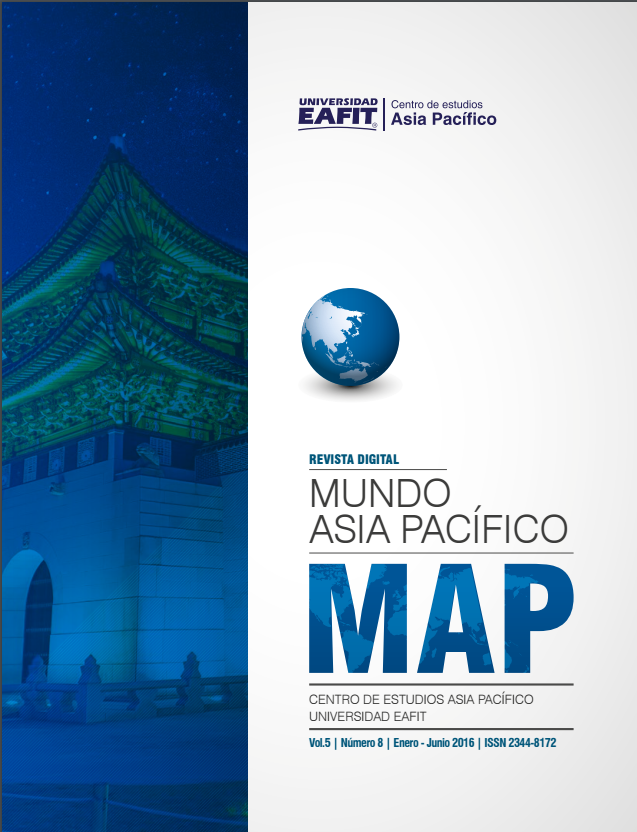Dynamics of the Korean population since 1960 and its relationship with the demographic transition
Main Article Content
Keywords
Republic of Korea, demographic transition, population growth, aging, fertility, mortality.
Abstract
South Korea´s demographic transition process, where high mortality rates-remained after the Korean War- dropped significantly followed by a reduction of fertility rates, shaped the dynamics and distribution of its population, which first experimented an expansion and later an aging process. This paper aims to describe the main changes in Korean population dynamics since the 1960´s (decade where high scale planned parenthood programs where implemented as part of the five year plans for economic development) by identifying two main characteristics of the demographic transition process: changes in the distribution of the population and population aging.
Downloads
References
Casterline, J. (2003). Demographic transition. Encyclopedia of Population. P. Demeny and G. McNicoll, Macmillan.
Chun, H., L. Doyal, et al. (2006). “Understanding Women, Health, and Social Change: The Case of South Korea.” International Journal of Health Services
Dyson, T. (2001). “A partial theory of world development: The neglected role of the demographic transition in the shaping of modern society.” International Journal of Population Geography.
Heon , J. S. (2010). Kitakyushu Forum on Asian Women. Recuperado el 3 de Abril de 2016, de http://www.kfaw.or.jp/report/pdf/CSW%20Suh.pdf
Myrskyla, M., H.-P. Kohler, et al. (2009). “Advances in development reverse fertility declines.” Nature.
McGuire, J. W. (2001). “Social Policy and Mortality Decline in East Asia and Latin America.” World Development.
McNay, Kirsty. Women’s changing roles in the context of the demographic transition, Education for All Global. Monitoring Report 2003/4 Gender and Education for All: The Leap to Equality
Phang, H. S. (2003). Rapid Ageing and Labor Force Changes in Korea. International Seminar on Low Fertility and Rapid Ageing. Seoul, Republic of Korea, Korea Labor Institute .
Phang, H. S. (2003). Rapid Ageing and Labor Force Changes in Korea. International Seminar on Low Fertility and Rapid Ageing. Seoul, Republic of Korea, Korea Labor Institute .
Phang, H. S. (2005). Demographic Dividend and Labour Force Transformations in Asia: The Case of Korea. United Nations Expert Group Meeting on Social and Economic Implications of Changing Population Age Structures. Mexico City, Mexico, UN: Population Division. Department of Economic and Social Affairs. D. population ageing and future labour force (pp. 129).
OECD (1998). Korea. Reviews of national policies for education. Paris, France, Organisation for Economic Co-operation and Development.
OECD (2004). Ageing and Employment Policies: Korea. Ageing and Employment Policies Project. M. Keese and J. Lee, Organization for Economic Co-Operation and Economic Development.
Yang, J. M. (1977). Family planning program in Korea. 18. (Y. M. Journal, Ed.) Seúl,Korea. Obtenido de http://synapse.koreamed.org/Synapse/Data/PDFData/0069YMJ/ymj-18-64.pdf

